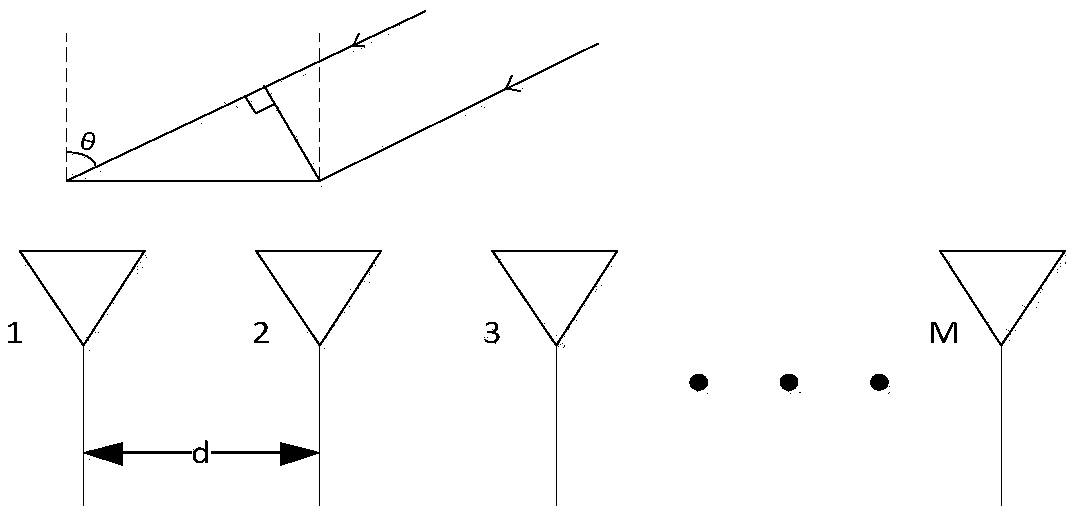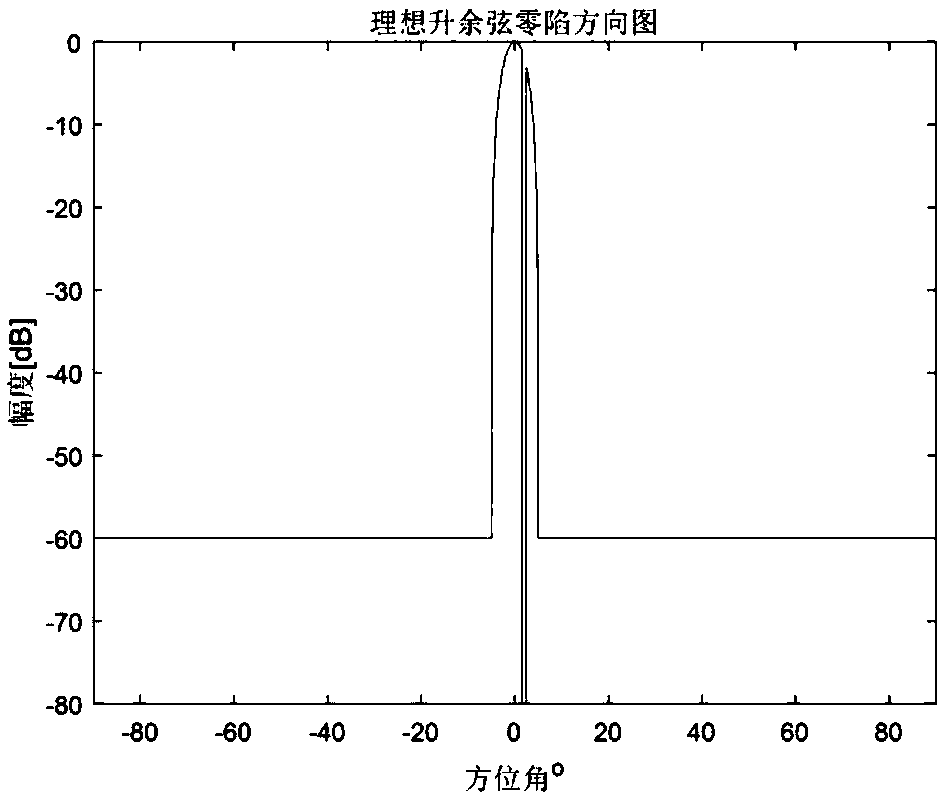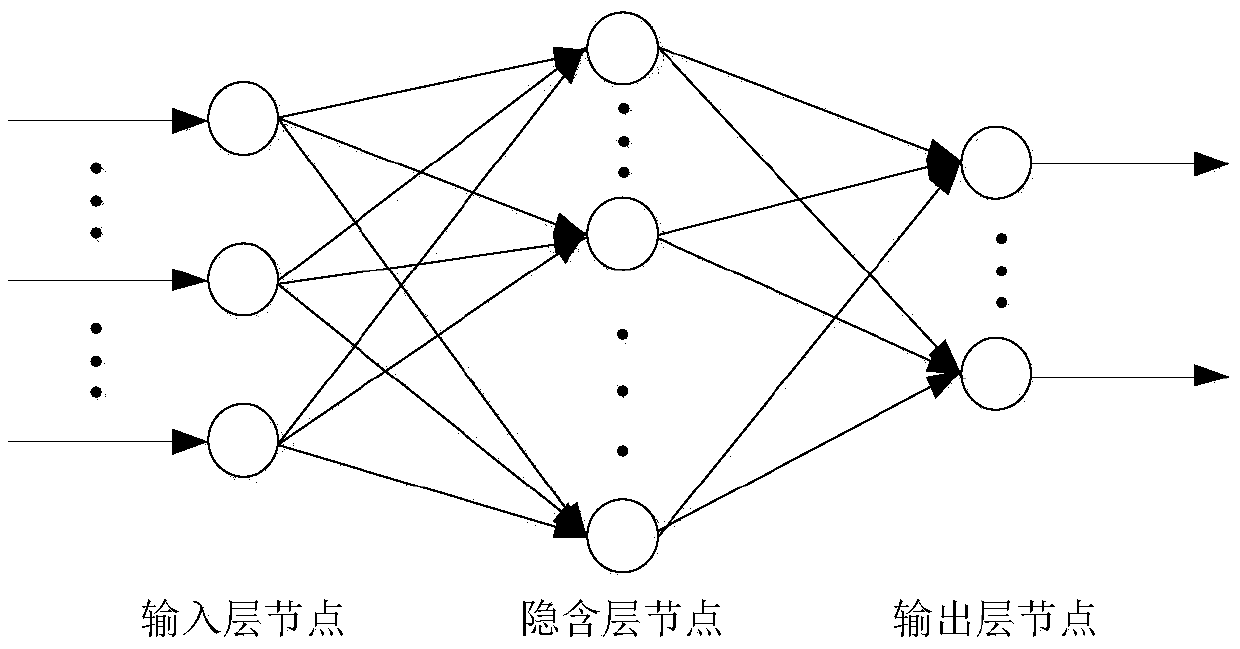Radar main lobe interference suppression method based on neural network
A neural network and main lobe interference technology, applied in the field of radar, can solve the problems of main beam deformation peak, difficult processing, and zero trapping
- Summary
- Abstract
- Description
- Claims
- Application Information
AI Technical Summary
Problems solved by technology
Method used
Image
Examples
Embodiment Construction
[0024] A neural network-based main lobe interference suppression method of the present invention will be described in detail below in conjunction with the accompanying drawings.
[0025] A kind of main lobe interference suppression method based on neural network of the present invention, comprises the steps:
[0026] 1) if figure 1 As shown, according to the geometric model of the radar, the arrangement of the array elements is determined. Here, the uniform linear array is used as the model for analysis. figure 1 The uniform linear array in is composed of M identical omni-directional antenna elements that are evenly distributed on a straight line. The first array element is selected as the reference array element, and the array element numbers are m=1,2,3,..., M; the array element spacing is d. For specific analysis, M=17, λ is the input signal wavelength.
[0027] 2) According to the array element arrangement given in step 1), the main lobe width is about 5.9°, and th...
PUM
 Login to View More
Login to View More Abstract
Description
Claims
Application Information
 Login to View More
Login to View More - R&D
- Intellectual Property
- Life Sciences
- Materials
- Tech Scout
- Unparalleled Data Quality
- Higher Quality Content
- 60% Fewer Hallucinations
Browse by: Latest US Patents, China's latest patents, Technical Efficacy Thesaurus, Application Domain, Technology Topic, Popular Technical Reports.
© 2025 PatSnap. All rights reserved.Legal|Privacy policy|Modern Slavery Act Transparency Statement|Sitemap|About US| Contact US: help@patsnap.com



